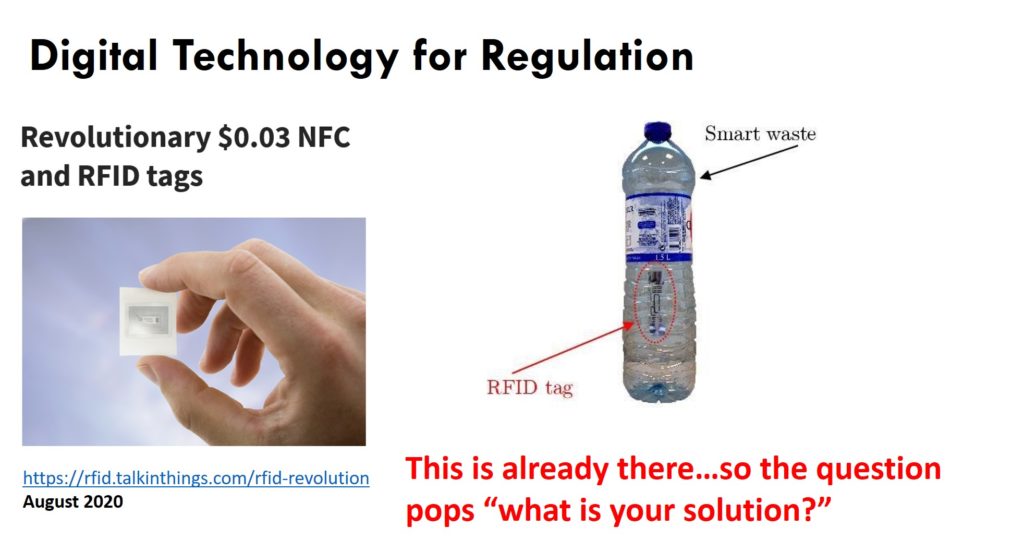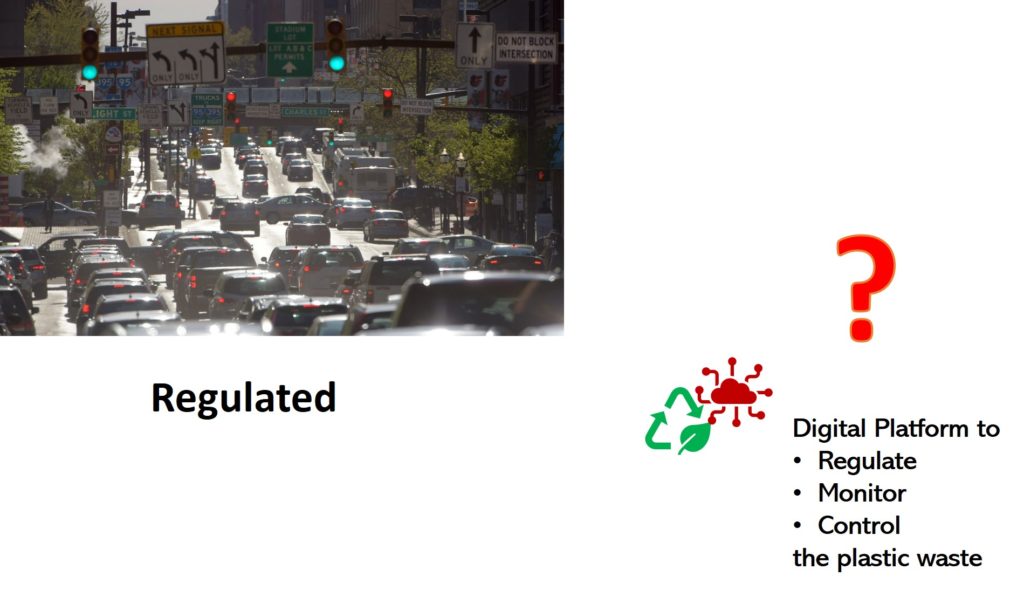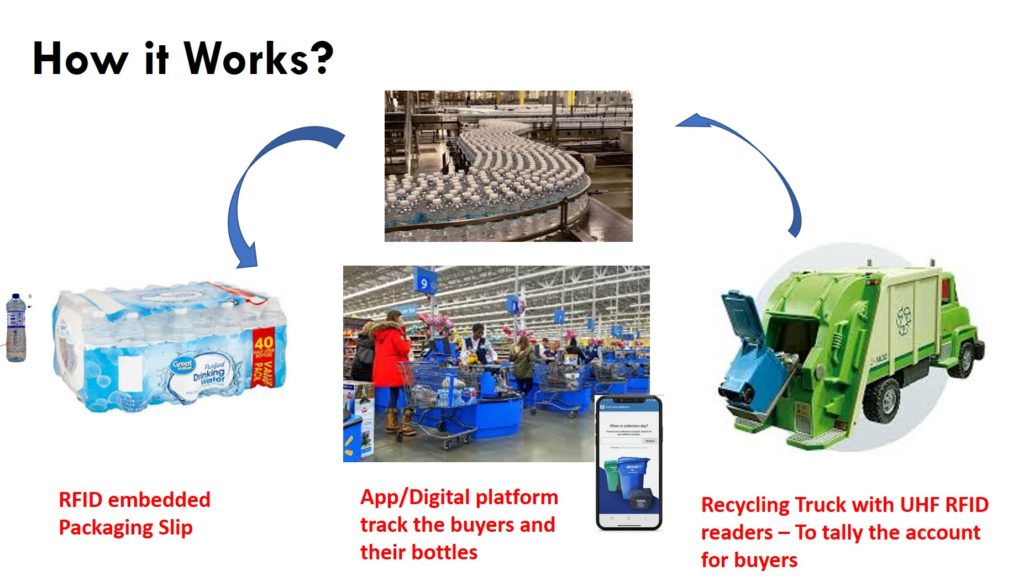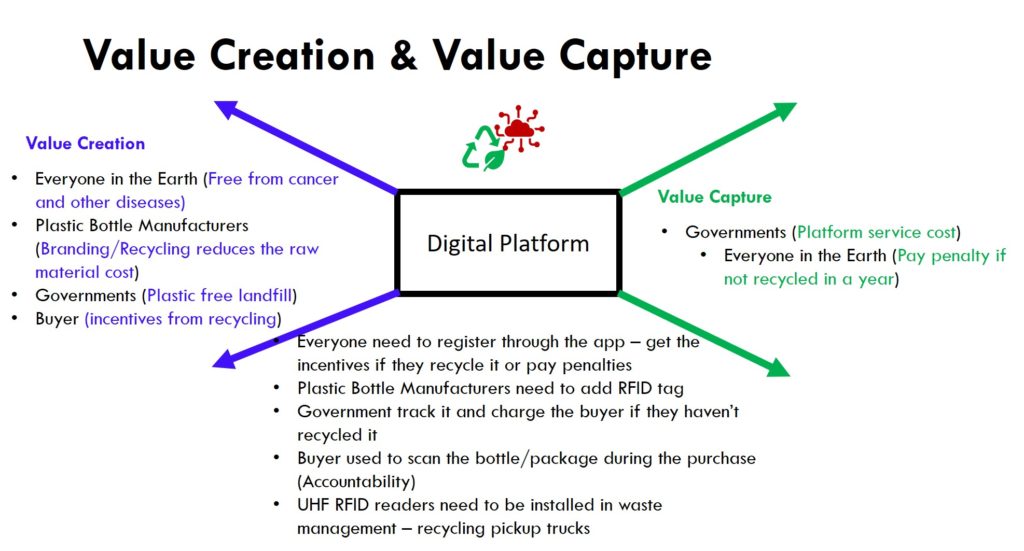End Plastic Waste

Plastic pollution accumulating in our planet is a major threat to societies, industries, and the general wellbeing of people all around the world. Plastics are increasingly used around the world in consumer products, packaging, and much more. How do we can stop this plastic landfills?
PPt is attached

Plastic pollution is our planet’s major threat. Plastics are increasingly used around the world in consumer products, packaging, and much more. Specifically, annual plastic production has doubled since 2000. [1] Unfortunately, 81.7 percent of this total plastic waste ends up in landfills, which are filling up quickly, and only a minor portion of plastic waste is recycled or used for energy production. Plastics take 300 to 1000 years for a partial decomposition. If our current systems of dealing with plastic waste continue, roughly 12 billion metric tons of plastic waste will be in landfills or the natural environment (cities, forests, and water bodies) by 2050. [2] This waste does not go away and much of it builds up to create gigantic “plastic soups” in rivers lakes and the oceans. The largest of these has been termed the Great Pacific Garbage Patch. The plastic soup consists mainly of fishing nets, plastic bags, and plastic bottles and caps.
In the past 20 years, there has been a surge in the availability and consumption of bottled water. Here are some facts related to bottled water as indicated by The World Counts: [3]
Thus, a simple and practical solution is very much needed to prevent or reduce plastic waste accumulation. The following thought process is bundled to achieve the objective of this project.
- Plastic bottles should be tracked end-to-end (manufacturer-consumer-recycling facility).
- Plastic bottle collection and recycling should be simplified, streamlined, and promoted.
- Consumers should be educated and incentivized to recycle properly.
Problem Statement:

Only 20% of plastic bottles are recycled. The rest end up in landfills or in the ocean at a rate of 1500 bottles/second.

- 700 years to start decomposing.
- Around 90% of the cost of bottled water is spent on packaging.
- Plastic bottle chemical components (Antimony, Bisphenol A, phthalates) are very harmful to health and the environment.
Solution:
- Avoid Plastic – Unrealistic / Impractical
- Recycle – So difficult to do it (20% is the maximum possible with the current approach)
So what we can do it?
Proposed Solution and Approach – A smart sensor-based integrated Radio Frequency Identification (RFID) recycling digital platform can address this challenge. This platform includes a) RFID-based package or water bottle tracking through a cellphone application; b) a cloud-based tracking system from the recycling truck or collection center; and c) a smartphone application to link the consumer to make sure that their recycled water bottles are bringing revenue or they have to pay the penalties if they missed to through it in a recycling bin within a specific time frame.
The smart packaging with RFID tags combined with the Internet of Things (IoT) solutions can be used to 1) Enhance the end-to-end traceability of plastic bottles through real-time data generation; and 2) Facilitate the recycling process of plastic bottles through active engagement of the consumer. This platform helps and motivates the consumer to recycle properly.
Technology: RFID is a technology that allows us to identify almost any object wirelessly using data transmitted through radio waves. RFID tags are better than traditional barcode tags because radio waves are used to capture the electronic product code information rather than an optical scanner. This way, tracking inventory can be done automatically without hunting down and scanning every item in a warehouse or store. Sensing properties can be added on top of the RFID tags and blockchain can be integrated into the system to protect the safety and privacy of the users. RFID tags and labels can be printed at a convenient cost of fewer than 5 cents, depending on the volume. [4] RFID technology has been used in different applications, including healthcare tracking, inventory management, product authentication, animal identification, and access control monitoring. [5] Recently, RFID-based waste management has been used in cities and counties such as Cleveland to meet asset tracking requirements and evaluate which customers are participating in recycling diversion programs that save them on disposal fees. [6, 7] RFID waste management utilizes the power of RFID to identify and track waste bins. When the truck empties the bin, the RFID tag is read and weighed to bill according to the amount of waste produced. To the best of our knowledge, a smart RFID-based platform including integrated dispensing, recycling, and the educative unit has not been fully demonstrated.
Technology Embedded Solution that Enforces the Orderliness (Recycling)

Enforced Regulation and Track it through a Digital Platform is the solution.
A simple analogy of traffic signal implementation can be used to explain this.
Fewer cars, we didn’t need any traffic lights. But at increased traffic the solution (traffic light) came and regulated (Pay penalty) the users (Since 1914, the first traffic signal in the USA).

Regulation controls the disorderliness and reduces irreversible impacts.

Rules here for plastic bottle
- Each and everyone who buys the plastic bottle is responsible for routing it to the recycling station !!?!?!?!??!?!
- Is it possible?
- Yes, a digital platform help resolve


Approach:
Collect the Voice of customers and collaborate with local municipalities, RFID manufacturers, and water bottle manufacturers to develop the value proposition.
Develop a smartphone-based application that allows the consumer to scan the tag and collect the information when they buy the water bottles as well as track it through waste management (recycling product pick up trucks or recycling centers using RFID scanners)
Collect the data through pilot testing.
Regulation and Monitoring System are Critical to Save the Earth from Plastic Landfills
Key Benefits – The key benefits of applying the proposed smart recycling technology are:
- Real-time tracking of plastic bottles throughout the supply chain ensures not only transparency, authenticity, and product quality but improves the proper recyclability of plastic wastes.
- A smart collection facilitates recycling. Recycling is designed to save money on waste disposal and decrease the use of landfills. The smart collection would pre-sort the items based on their unique identifier, reducing the risk of cross-contamination of plastics.
- Consumers are engaged in the recycling process, and they will be educated and pushed for proper recycling. Consumers are motivated to bring back their empty bottles to the recycling station to get incentives (e.g., economic credit for some recycled bottles).
- Plastic bottles occupy space in the trash bins if unproperly disposed. With small bins, excess recyclable materials are often left on the curb to be picked up as trash. Smart recycling enables access to smart bins and leaves more space for additional recycling.
- RFID technology has the potential to be upgraded. Sensing features to detect and monitor in real-time temperature and/or pathogen could be added into the RFID tags. RFID technology also has the ability to be incorporated into the blockchain management system that allows the measurement and safer storage of data along with ID information.
- The concept of this project relies on the combination of two different emerging technologies: “Internet of Things (IoT)” and “Internet of Packaging (IoP)”. While IoT was used to describe the role of Ultra-High Frequency Radio-Frequency Identification (UHF RFID) in making supply chains more efficient[8], IoP is the application of IoT into the packaging and could provide necessary visibility and traceability. [9]
References
| [1] | B. Gardiner, “The Plastics Pipeline: A Surge of New Production Is on the Way.,” 2019. [Online]. Available: https://e360.yale.edu/features/the-plastics-pipeline-a-surge-of-new-production-is-on-the-way.. [Accessed 30 June 2020]. |
| [2] | E. M. Foundation, “The New Plastics Economy: Rethinking the future of plastics.,” 2017. [Online]. Available: https://www.ellenmacarthurfoundation.org/publications/the-new-plastics-economy-rethinking-the-future-of-plastics . [Accessed 20 July 2020]. |
| [3] | T. W. Cunts, “Planet Earth: Waste,” 2020. [Online]. Available: https://www.theworldcounts.com/challenges/planet-earth/waste/great-pacific-garbage-patch-size.. [Accessed 30 July 2020]. |
| [4] | TalkingThings, “TalkingThings: Join smart packaging revolution today!,” August 2020. [Online]. Available: https://talkinthings.com/. [Accessed 20 August 2020]. |
| [5] | B. Aliakbarian, “Smart packaging: Challenges and opportunities in the supply chain.,” CSCMP’s Supply Chain Quarterly, vol. Q1, pp. 34-38, 2019. |
| [6] | M. Greenwalt, “How RFID Technology is Evolving in the Waste and Recycling Industry.,” 4 October 2017. [Online]. Available: https://www.waste360.com/fleets-technology/how-rfid-technology-evolving-waste-and-recycling-industry. [Accessed 4 August 2020]. |
| [7] | W. McElroy, “Big Brother Is Watching You Recycle,” 6 December 2010. [Online]. Available: https://www.laprogressive.com/rfid-recycling-bins/. [Accessed 4 August 2020]. |
| [8] | K. Ashton, “That “Internet of Things” Thing.,” RFiD Journal, vol. 22, pp. 97-114, 2009. |
| [9] | C. Koelsch Sand, “How IoP Can Connect the Packaged Food Value Chain.,” Food Technology, pp. 80-83, 2020. |


Innovative idea. Worth exploring further.
Please share where it can be improvised ! red flags you see in this concept.
Great social impact venture, to reduce the plastic from filling up the landfill. Similarly synthetic cloth is a big culprit as well.
Thanks.